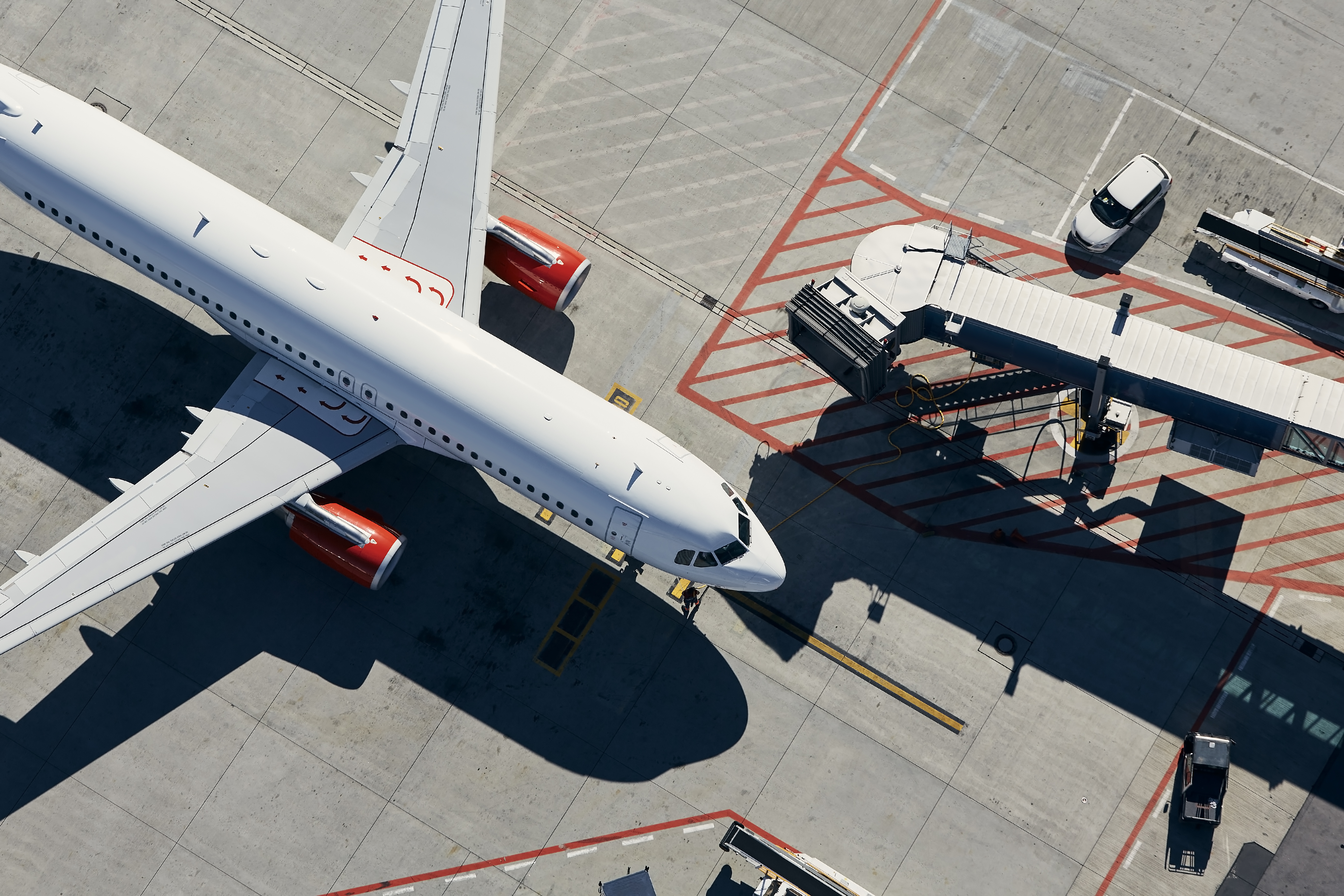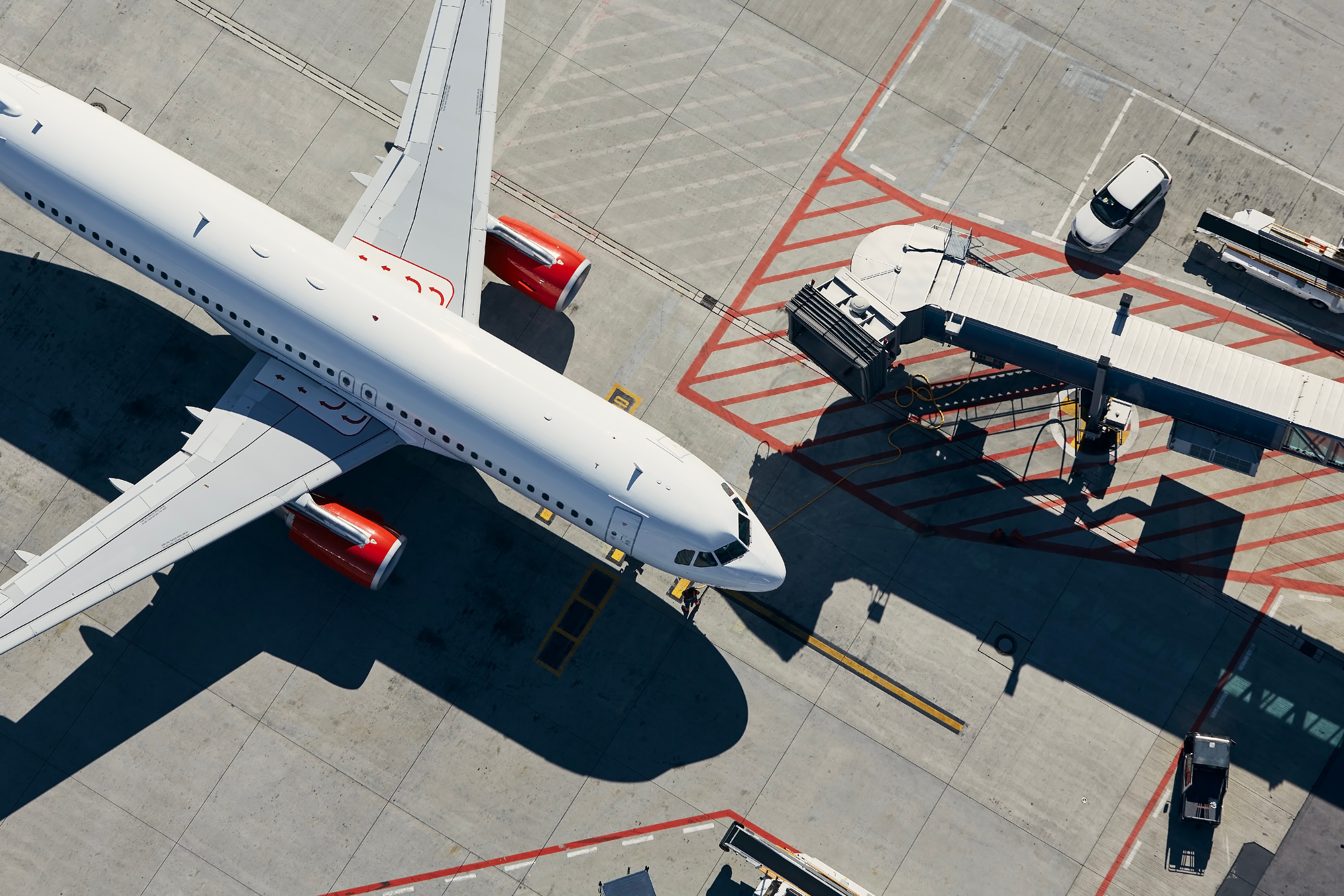
There’s no mincing words when it comes to the environmental impact of air travel: jet fuel is far from climate-neutral. Air traffic emits over 1 billion tons of CO2 annually, accounting for 3% of all global emissions. Government leaders are expressing their desire to see this contribution reduced, with clear targets being set across both the US and EU for increased production, incorporation, and use of sustainable aviation fuel (SAF). As a leader in decarbonization and renewable technologies, Topsoe says it’s about time.

“Can’t air travel be electrically powered?”
While electric planes may well end up fulfilling shorter-distance domestic roles, a fully electrified aviation industry would be difficult to realize, given the physical challenges posed by attempting to integrate high-capacity batteries within current fuselage designs; a 747 would require a battery so enormous that the remaining cabin space could accommodate only a handful of passengers.
As such, it’s estimated that most planes will still utilize drop-in fuels by 2050, so the question is not whether SAF is the answer to supporting carbon-neutral aviation, but rather the extent to which global SAF availability can be increased in the coming years in order to realize this ambitious goal.
“What’s standing in the way?”
A variety of obstacles lie between the aviation industry and sustainable operation. For a start, commercial airlines aren’t currently allowed to fly on SAF alone. A maximum blend ratio of 50% sustainable fuel to 50% fossil fuel is permitted, and it will take time before SAF is approved for widespread, full-scale replacement of fossil fuel.
Next is the issue of leveraging the SAF-production process itself. While there are seven approved pathways to effective production, only one, which uses hydrogenated acids and fatty acids to deliver synthetic paraffinic kerosene, is currently available for commercial-scale production.
Lastly, and perhaps most importantly, the availability of feedstocks from which SAF can be derived is currently lacking. Approved feedstocks are in high demand, with prices increasing by the week. Substances that the average consumer might regard as little more than disposable waste, like used cooking oils and animal fats, are key to ensuring long-term SAF availability,
As a result, supply and demand are hardly equal. Currently, only 200,000 tons of SAF are produced annually; the aviation industry consumes over 300,000,000 tons of fuel annually. That aforementioned 747 burns over 75 tons on a single journey from London to New York, alone, while a lighter 787-9 can make the jump with “only” 44. It goes almost without saying that significant production ramp-up is needed to provide for the kind of availability that will fundamentally transform the industry’s carbon intensity for the better.
That’s where companies like Topsoe play a role.
“What’s Topsoe doing about it?”
The technology and catalysts needed to produce high-purity jet fuel, from a variety of renewable sources, already exist. In fact, we’ve been working with them for over ten years; Topsoe’s HydroFlex™ technology can now produce SAF from any commercially available feedstock, the result of our R&D department’s constant efforts to analyze, test, and verify the viability of every option under the sun. A decade’s worth of knowledge and demonstrated expertise in renewable-fuel production has made us the global leader in the field, with producers lending us their trust in pursuit of complex, highly challenging objectives – and finding that trust pays off time after time.
In addition to hydroprocessing of solid and liquid feedstocks, we also possess and license solutions for producing what is, arguably, the final evolution of drop-in fuel: electrofuels, or “eFuels.” By equipping our G2LTM eFuel solutions with electrified Reverse Water-Gas Shift (eRWGS) technology, we facilitate a process whereby jet fuel is produced using nothing more than renewable electricity, water, and CO2.
All that’s needed is the willingness, on the part of producers and governments, to invest in SAF. We’ve already licensed more than ten HydroFlex plants for SAF production, all of which are expected to begin production within the next five years; from Dutch SkyNRG to Swedish Preem AB, we’re helping producers take real steps in the right direction. But it’s important that all producers recognize the role they can play, and that governments make every effort to incentivize the transition to SAF production. We’ve seen it work in the United States, where biofuel obligations are set to grow steadily over the next decade - and beyond.
“We know the environmental impact of certain key industries – and therefore the potential good that would result from powering them renewably – is simply too great to ignore,” said Fei Chen, Senior Vice President of Clean Fuel & Chemicals Technology at Topsoe. “We also know that the sooner producers invest in SAF production, the sooner the market will be able to mature, and the greater the environmental benefit will be. We’re ready to help make it happen, and we believe a lot of producers are, too. To all of them, we say, ‘Reach out to us, and let’s transform how the world flies.”
Share your thoughts
Comment on this post